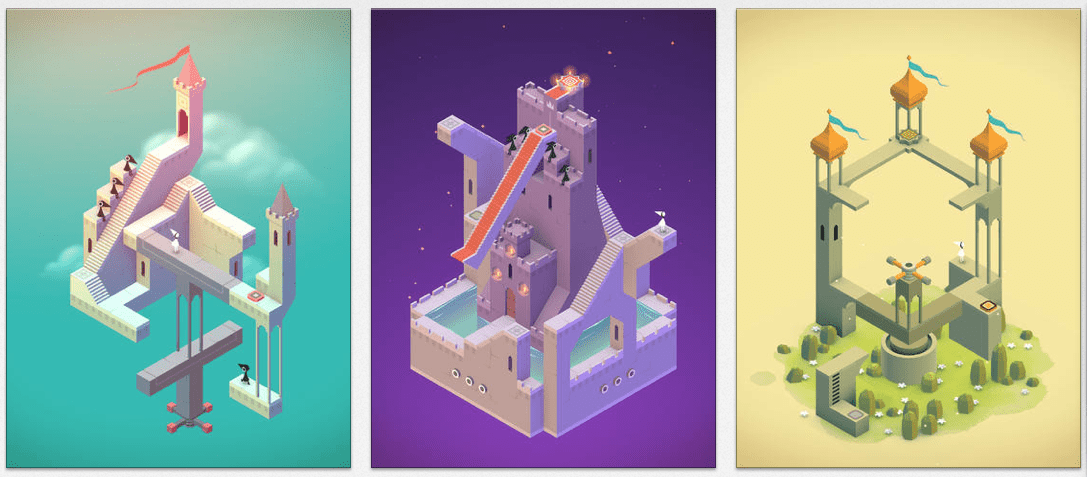I played Monument Valley, developed for iOS and Android by Ustwo Games. The target audience for this game is people that enjoy more abstract thinking, as well as puzzle games that induce a more wistful tone. The objective of this game, as a puzzle game is to solve the puzzles, which revolve around navigating the main character through architecture found in optical illusions. These puzzles challenge the player to see the architecture in a different light, as it bends lines and platforms and moves the player onto different platforms and planes than expected. The player’s interactions with the game are restricted to singleplayer vs game- there is no other form of competition. Resources in this game can be considered to be the movable parts of the architecture that players use to figure out how to move the character to another part of the map. The boundaries are constricted by the floating architecture within the game and the planes the character is currently on. This is a game about sensation and challenge- the aesthetics within the game are sublime and the transitions between scenes are just as emphasized as the gameplay itself. The soundtrack and the animation also combine to make the game’s experience more focused on a player’s senses as well. It is also a game that stresses challenge, as it asks players to think in an alternate mindset about how to move their character from one part of the platform to another plane. I think that Monument Valley absolutely reached its goals- its gameplay is very unique, to the point where I’ve constantly thought of the game after playing it and trying to emulate how I felt playing the game in other contexts. I loved the combination of abstract art with architecture- its message worked perfectly in the form of a low-stakes puzzle game. One thing I might change is being more explicit when it came to guiding players to the moveable aspects of the puzzles. There were certain visual cues already (dots on some of the slideable puzzles) but it took a couple of levels for me to make the connections for the other forms of puzzles, especially when it came to rotating parts. Otherwise, I was just tapping on the screen randomly to figure out what parts were moveable. I feel like the movements and adjustments that were collected within the game (rotating, sliding, up and down) as well as the pieces that were moveable as mechanics of the game were perfect ways to deliver the idea of moving optical illusions. Thus, these actions, despite being simple, caused immense effect, quite literally shifting a character’s world around as they moved onto more unconventional parts of the architecture. This simple to large effect influenced the scale and wonder of the game, as it caused you to immediately shift your mindset and see the architecture from the character’s new plane of existence immediately.
About the author
Related Posts

April 7, 2021
Critical Play: “Yes &&”
April 7, 2021
Backgammon: MDA & Fun
April 7, 2021


